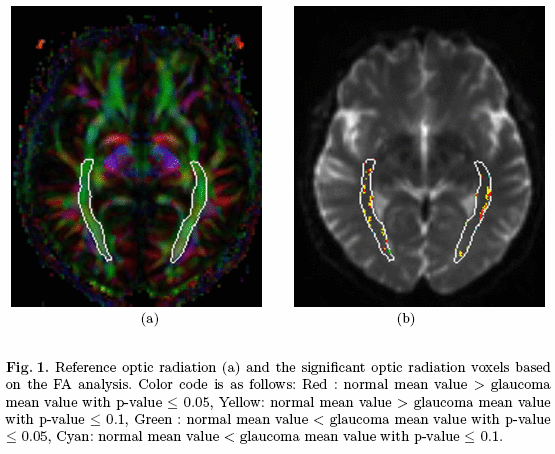Prof. Dr.-Ing. Ahmed El-Rafei
Alumnus of the Pattern Recognition Lab of the Friedrich-Alexander-Universität Erlangen-Nürnberg
Analysis of the Optic Radiation in Glaucoma Patients
In this project the diffusion tensor imaging is investigated as an analysis tool of glaucoma. The diffusion tensor derived parameters within the optic radiation are examined and their ability in differentiating between normal and glaucoma subjects is investigated. We are concerned with the optic radiation as an important fiber bundle in the human visual system. The following different approaches are used for this purpose:
- Histogram based analysis of the optic radiation
Diffusion tensor derived parameters such as anisotropy index (Fractional anisotropy) and diffusivity parameters (axial, radial and mean diffusivities) describe medically relevant fiber properties such as fiber integrity and degree of myelination. The mean of the histogram of these parameters within the optic radiation is used to investigate the correlation of glaucoma stages and the changes within the optic radiation fibers.
- Voxel-based analysis of the optic radiation
In this work, we aim to localize the effect of glaucoma on the optic radiation. A framework for the identification and analysis of the optic radiation using diffusion tensor imaging (DTI) is proposed. The results indicate that the proposed framework is able to efficiently localize the effect of glaucoma on the optic radiation. The framework avoids the dependence on the tensor-derived parameters affected by glaucoma. Moreover, results are in agreement with previous studies showing global FA reduction associated with glaucoma. The system is able to efficiently localize the effect of glaucoma on the optic radiation. Further details about the framework can be found in the ![]() poster presented in the ARVO 2010.
poster presented in the ARVO 2010.


 +49 9131 85 27826
+49 9131 85 27826
 +49 9131 85 27270
+49 9131 85 27270

